This 8mp camera module is capable of 1080p video and still images that connect directly to your Raspberry Pi. This is the plug-and-play-compatible latest version of the Raspbian operating system, making it perfect for time-lapse photography, recording video, motion detection and security applications. Connect the included ribbon cable to the CSI (Camera Serial Interface) port on your Raspberry Pi, and you are good to go!
The board itself is tiny, at around 25mm x 23mm x 9mm and weighing in at just over 3g, making it perfect for mobile or other applications where size and weight are important. The sensor has a native resolution of 8 megapixel, and has a fixed focus lens on board. In terms of still images, the camera is capable of 3280 x 2464 pixel static images, and also supports 1080p30, 720p60 and 640x480p90 video.
Note: This module is only capable of taking pictures and video, not sound.
- Image Sensor: Sony IMX219
- Maximum Photo Resolution: 3280 x 2464 pixel
- Supported Video Resolution: 1080p30, 720p60 and 640x480p90
- Physical Dimensions: 25mm x 23mm x 9mm
- Interface: CSI connector (15cm ribbon cable included)
- Supported OS: Raspbian (latest version recommended)
Raspberry Pi Camera Module V2 Product Help and Resources
Setting Up the Pi Zero Wireless Pan-Tilt Camera
September 14, 2017
This tutorial will show you how to assemble, program, and access the Raspberry Pi Zero as a headless wireless pan-tilt camera.
Computer Vision and Projection Mapping in Python
February 6, 2019
Use computer vision to detect faces and project images on top of them.
Basic Autonomous Kit for Sphero RVR Assembly Guide
December 12, 2019
Get your Basic Autonomous Kit for Sphero RVR all hooked up with this guide!
Advanced Autonomous Kit for Sphero RVR Assembly Guide
December 12, 2019
Get your Advanced Autonomous Kit for the Sphero RVR built up with this hookup guide!
Getting Started with the Autonomous Kit for the Sphero RVR
December 13, 2019
Want to get started in robotics? Look no further than the SparkFun autonomous kit for the Sphero RVR! Whether you purchased the Basic or Advanced kit, this tutorial will get you rolling...
Core Skill: Electrical Prototyping
If it requires power, you need to know how much, what all the pins do, and how to hook it up. You may need to reference datasheets, schematics, and know the ins and outs of electronics.
Skill Level: Rookie - You may be required to know a bit more about the component, such as orientation, or how to hook it up, in addition to power requirements. You will need to understand polarized components.
See all skill levels
Comments
Looking for answers to technical questions?
We welcome your comments and suggestions below. However, if you are looking for solutions to technical questions please see our Technical Assistance page.
Customer Reviews
4.2 out of 5
Based on 16 ratings:
1 of 1 found this helpful:
Pi Camera is great!
Great quality camera!
1 of 1 found this helpful:
Works great
No problems at all. Just tried it once to verify it works, and it does. Simple to hook up.
3 of 4 found this helpful:
Sweet! and Sour.
Okay, I didn't do enough homework and my expectations were probably a bit too high. However, my rating would be higher ON SPARKFUN if they had done two things. 1) Include the $0.10 lens focusing tool in the package, and 2) provided some information on this product page about how blind this camera is in the dark.
The lens is a fixed focus lens that comes set at some distance. If you don't like where it is set, you need the lens focusing tool, a little plastic ring, to set the focus. Yes you can do it with some needle nose, but it is a pain trying to get them on the lens, not tear it up, keep your hand out of the way, and look at your monitor all at the same time. Probably costs a penny to make the tool.
You can see better in the dark than this camera. Don't think the NoIR version is any better, it isn't. So it isn't going to be a survellience camera without a streetlight.
Other than my gripes, it is a nice little camera that makes a sweet web cam when paired with the Pi Zero W and the Pi zero case with the camera top.
1 of 2 found this helpful:
Fixed Focus and Very fragile
tldr; lens not adjustable. be very careful removing this board from a pi zero case
There are a few HOWTOs on adjusting the focus on the lens but it's a dicey operation as the lens is glued to a fixed position. I was able to adjust the lens but in removing the camera from the pi zero case for a second adjustment, the lense popped off the board, and unfortunately it does not snap back on. I tried glue but some damage must have occurred as uv4l doesn't recognize the camera anymore so apparently this camera is trash now
1 of 3 found this helpful:
THAT
When I ordered this camera I assumed it would come with some sort of "how to" documentation, or at least some reference to where that could be found online. However, there was no trace of documentation in the package and I'm trying to figure out where I can find instructions for hooking this to my Raspberry Pi and get a software download to make it work. HELP!
Sorry to hear about the issues with the Pi camera module directions! If you're having problems following the instructions here: https://www.raspberrypi.org/learning/getting-started-with-picamera/ you will want to contact our technical support department, @ Techsupport@sparkfun.com - they're usually very good at helping to get people started with devices like these.
Worked for me - Pi Zero W warning
I bought this for my Pi Zero W attached to my Prusa 3D printer. Unfortunately the Pi Zero has a smaller connector. I had to buy another small ribbon cable that has this connector on one end and the narrower pitch connector on the other.
Camera is great. Related case, not so much.
The camera is fantastic. I'm looking forward to getting plenty of time-lapse captured with this. The associated case that is offered, however, is not designed for this camera. I would recommend looking elsewhere for the case, as the case hole does not line up with the camera lens, and the case requires modification.
Works on Jetson Nano
I bought this camera module for my Jetson Nano for my car project. Worked as expected. It's not a wide-angle lens though which might be slightly more desirable. The quality is good even in lower light and it's no harder to use than any other camera module.
High Performance, Great Value
We use these in industrial applications and they are fantastic. Low power requirements, high performance, and easily configured. Raspberry doesn't get enough credit for bringing good tech to the masses.
very clear and works great with my project!!
Awesome camera!! very clear and shows vivid color! very high quality resolution! We are using this for AI recognition and works great! should work with any projects!
0 of 2 found this helpful:
Good
But I was expecting it is made in UK, but what I receive was made in CHINA
Works great as door camera
This has worked great as a WiFi door camera with a Raspberry Pi Zero W.

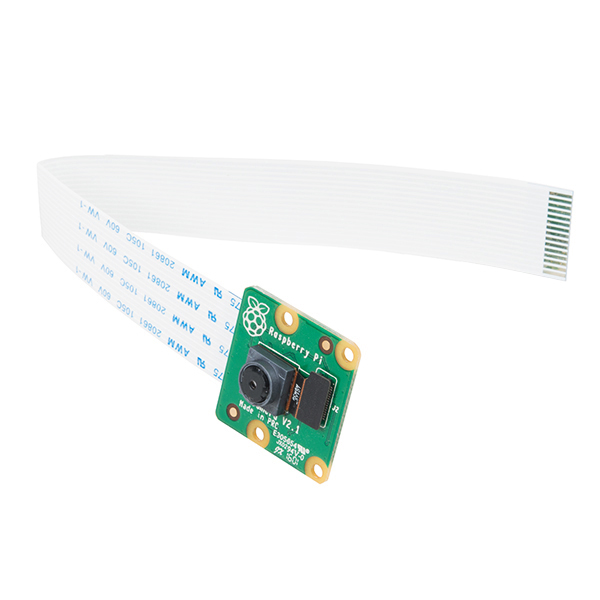
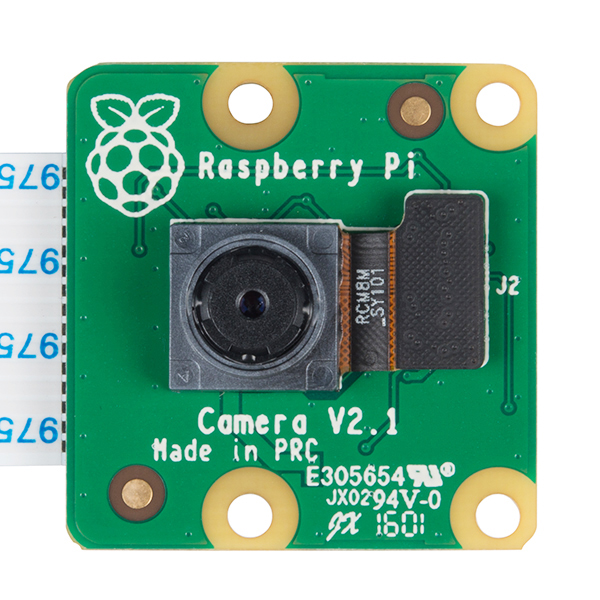
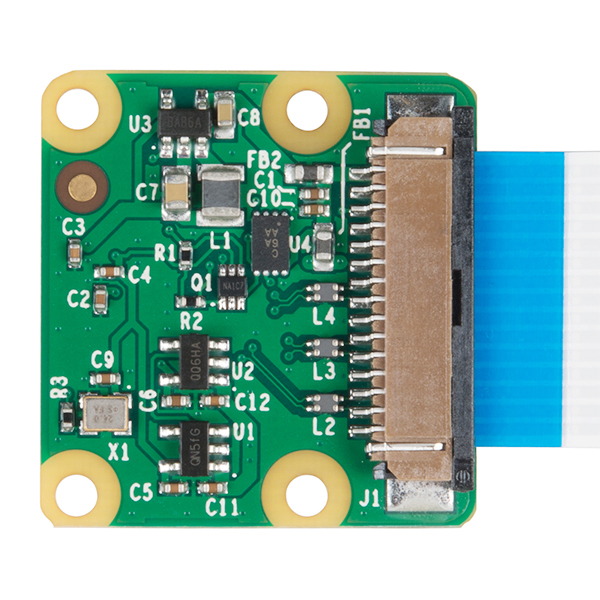
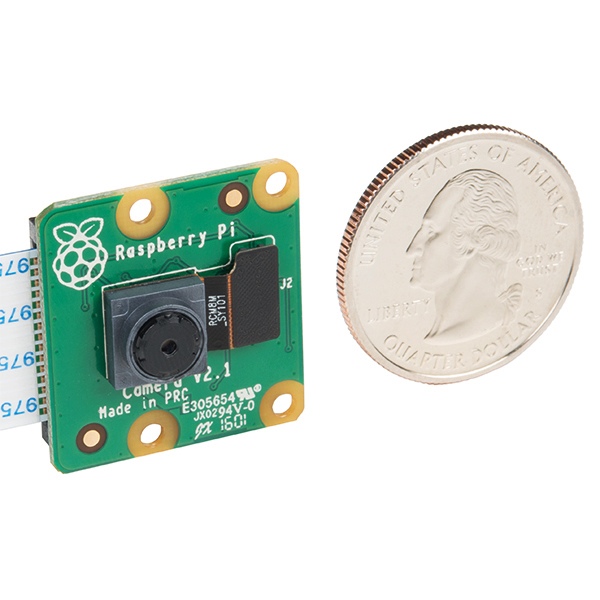
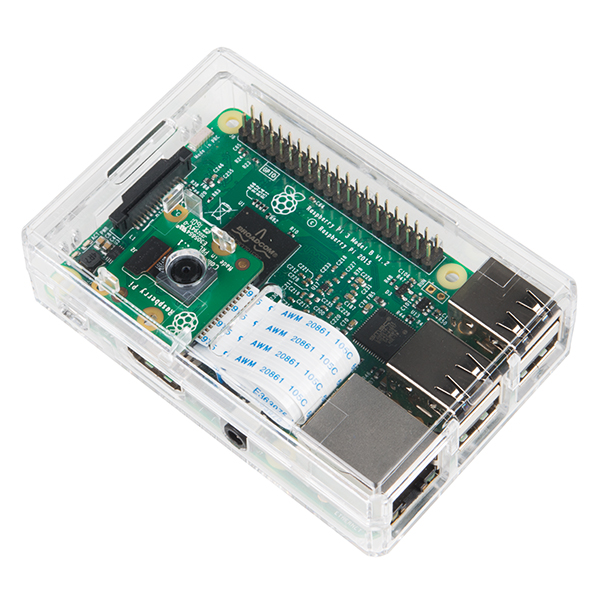
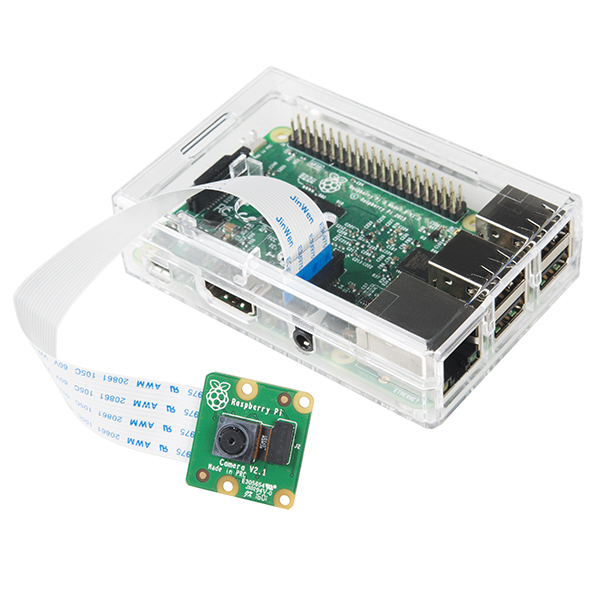
If you are unsure whether to get this camera or the newer more expensive HighRes camera, give this one a fair shot. I have both, and with this one, I always get a sharp picture and don't have to fumble with the aperture and focus rings. The latter are very hard to operate on the HighRes camera and you never get enough depth of field to have everything in focus. After all, I reverted to this camera as it is just a lot more reliable to get a sharp picture from. Also this camera nicely mounts onto the mount from picammount.com that attaches to the Raspberry Pi case for a compact mounting solution. The HighRes camera on the other hand is too heavy for using that mount to attach to the Raspberry Pi case itself. One more reason for going with the v2 camera.
Does the v2 camera work with old pi’s? I have some really old original B versions (cpuinfo 0x000e.) a list would be helpful in the product description.
Can this camera work with systems other than a Rasberry Pi, specifically a Samsung ARTIK?
Does it captures infrared? Can the IR filter be removed? How does it works in this particular matter? Thanks a lot!
The IR filter is not removable without seriously risking the camera (I don't recommend trying), but in its unmodified form certainly does'nt capture much IR light, since it has very poor "vision" in low light conditions.
What is the angular resolution or angular view this camera module? That's not info Sony can provide because it depends on the lens put in front of the chip. You can estimate the angular resolution for your customers by capturing a horizontal or vertical image of a 1 foot ruler at a distance of D >= 10 feet, with the ruler near the center of the image, and then counting the number N of horizontal or vertical pixels taken up by the ruler in the image. The angular resolution near the frame center will then be approximately (1 foot / D feet)*(1000 / N) in units of milliradians per pixel. So if D = 16 feet and N = 250, then we'd have approx 0.25 millirad per pixel near the center of the frame.
What is the focal range of the camera? I.e., how close can it be mounted and be in focus?
Can this camera be used with Pi Zero?
I was looking into that this morning as thanks to Nick I now want to build a camera. From what I can tell as long as the Zero has a camera connector on you should be fine, but not all versions of the Zero have the camera connector.
Edit: I bought a Pi Zero. The camera should work fine, but the Pi Zero camera connector is a different size so you will need a special cable to connect the camera.
Thanks for the twitter feed links - looks nice. Be interesting to hear the comments on length of cable - I'm wondering if the high speed serialization might have something to do with it http://mipi.org/specifications/camera-interface One way to extend to 15' would be USB-C - http://www.cypress.com/file/126136/download
The specs doesn't give the angle for the lens. I'm assuming it's not wide-angle, but what angle is it? In other words, if I stuff one of these in a 3D printer, how much or how little of the print bed will it actually see? And if it is wider angle, is it non-distorting? Or is it fish-eye like? Can the lens be changed? Is it focusable? The datasheet says the sensor module itself is "fixed focus", but that doesn't limit a lens attached to it from being focusable. And if it isn't focusable, what is the fixed-focus length? Apart from resolution and framerate, the datasheet doesn't say much...
And 15cm cable? Why do these cameras always come with such a small useless cable? I think every application I've ever used a RPi camera on needed at least a 30cm cable.
Can we please get a sample of what can be captured with this? Like a short video clip & picture at max settings. (fps & pixel count)
We can see about getting one up here on the page but for now (while no one is in the office) here is the twitter account Nick talks about in the video showing off some photos.